�
The Method
of Moments in
Electromagnetics
Walton C. Gibson
http://www.tripointindustries.com
kalla@tripoint.org
Chapman & Hall/CRC
Taylor & Francis Group
6000 Broken Sound Parkway NW, Suite 300
Boca Raton, FL 33487‑2742
© 2008 by Taylor & Francis Group, LLC
Chapman & Hall/CRC is an imprint of Taylor & Francis Group, an Informa business
No claim to original U.S. Government works
Printed in the United States of America on acid‑free paper
10 9 8 7 6 5 4 3 2 1
International Standard Book Number‑13: 978‑1‑4200‑6145‑1 (Hardcover)
This book contains information obtained from authentic and highly regarded sources. Reprinted
material is quoted with permission, and sources are indicated. A wide variety of references are
listed. Reasonable efforts have been made to publish reliable data and information, but the author
and the publisher cannot assume responsibility for the validity of all materials or for the conse‑
quences of their use.
Except as permitted under U.S. Copyright Law, no part of this book may be reprinted, reproduced,
transmitted, or utilized in any form by any electronic, mechanical, or other means, now known or
hereafter invented, including photocopying, microfilming, and recording, or in any information
storage or retrieval system, without written permission from the publishers.
For permission to photocopy or use material electronically from this work, please access www.
copyright.com (http://www.copyright.com/) or contact the Copyright Clearance Center, Inc. (CCC)
222 Rosewood Drive, Danvers, MA 01923, 978‑750‑8400. CCC is a not‑for‑profit organization that
provides licenses and registration for a variety of users. For organizations that have been granted a
photocopy license by the CCC, a separate system of payment has been arranged.
Trademark Notice: Product or corporate names may be trademarks or registered trademarks, and
are used only for identification and explanation without intent to infringe.
Library of Congress Cataloging‑in‑Publication Data
Gibson, Walton C.
p. cm.
The method of moments in electromagnetics / Walton C. Gibson.
Includes bibliographical references and index.
ISBN 978‑1‑4200‑6145‑1 (alk. paper)
1. Electromagnetism‑‑Data processing. 2. Electromagnetic
fields‑‑Mathematical models. 3. Moments method (Statistics) 4. Electromagnetic
theory‑‑Data processing. 5. Integral equations‑‑Numerical solutions. I. Title.
QC665.E4.G43 2008
530.14’1015118‑‑dc22
2007037311
Visit the Taylor & Francis Web site at
http://www.taylorandfrancis.com
and the CRC Press Web site at
http://www.crcpress.com
C614X_FM.indd 2
10/23/07 9:35:42 AM
�
Contents
Preface
Acknowledgments
About the Author
Chapter 1 Computational Electromagnetics
1.1 Computational Electromagnetics Algorithms
1.1.1 Low-Frequency Methods
1.1.2 High-Frequency Methods
References
Chapter 2 A Brief Review of Electromagnetics
2.1 Maxwell’s Equations
2.2 Electromagnetic Boundary Conditions
2.3 Formulations for Radiation
2.3.1 Three-Dimensional Green’s Function
2.3.2 Two-Dimensional Green’s Function
2.4 Vector Potentials
2.4.1 Magnetic Vector Potential
2.4.2 Electric Vector Potential
2.4.3 Comparison of Radiation Formulas
2.5 Near and Far Fields
2.5.1 Near Field
2.5.2
Far Field
2.6 Equivalent Problems
2.6.1
2.6.2
Surface Equivalent
Physical Equivalent
2.7 Surface Integral Equations
2.7.1 Electric Field Integral Equation
2.7.2 Magnetic Field Integral Equation
2.7.3 Combined Field Integral Equation
iii
ix
xiii
xv
1
1
2
2
4
5
5
6
6
8
9
10
11
12
13
14
15
16
18
18
20
25
25
26
28
�
iv
Contents
References
Chapter 3 The Method of Moments
3.1 Electrostatic Problems
3.1.1 Charged Wire
3.1.2 Charged Plate
3.2 The Method of Moments
Point Matching
3.2.1
3.2.2 Galerkin’s Method
3.3 Common Two-Dimensional Basis Functions
Pulse Functions
Piecewise Triangular Functions
Piecewise Sinusoidal Functions
3.3.1
3.3.2
3.3.3
3.3.4 Entire-Domain Functions
3.3.5 Number of Basis Functions
3.4 Solution of Matrix Equations
3.4.1 Gaussian Elimination
3.4.2 LU Decompositon
3.4.3 Condition Number
3.4.4
Iterative Methods
3.4.5 Examples
3.4.6 Commonly Used Matrix Algebra Software
References
30
33
33
34
39
43
44
44
45
45
45
46
47
47
48
48
50
52
53
57
58
61
Chapter 4 Thin Wires
4.6 Examples
4.1 Thin Wire Approximation
4.2 Thin Wire Excitations
4.2.1 Delta-Gap Source
4.2.2 Magnetic Frill
4.2.3
Plane Wave
4.3 Solving Hall´en’s Equation
4.3.1
Symmetric Problems
4.3.2 Asymmetric Problems
4.4 Solving Pocklington’s Equation
63
63
65
65
66
67
68
69
71
72
73
73
74
Solution Using Triangle Basis and Testing Functions
75
Solution Using Sinusoidal Basis and Testing Functions 77
78
79
79
83
86
87
Solution by Pulse Functions and Point Matching
4.5.1 Redistribution of EFIE Differential Operators
4.5.2
4.5.3
4.5.4 Lumped and Distributed Impedances
4.6.1 Comparison of Thin Wire Models
4.6.2 Circular Loop Antenna
4.6.3
Folded Dipole Antenna
4.6.4 Two-Wire Transmission Line
4.4.1
4.5 Thin Wires of Arbitrary Shape
�
Contents
4.6.5 Matching a Yagi Antenna
References
Chapter 5 Two-Dimensional Problems
5.1 Two-Dimensional EFIE
5.1.1 EFIE for a Strip: TM Polarization
5.1.2 Generalized EFIE: TM Polarization
5.1.3 EFIE for a Strip: TE Polariation
5.1.4 Generalized EFIE: TE Polarization
5.2 Two-Dimensional MFIE
5.2.1 MFIE: TM Polarization
5.2.2 MFIE: TE Polarization
5.3 Examples
5.3.1
5.3.2
References
Scattering by an Infinite Cylinder: TM Polarization
Scattering by an Infinite Cylinder: TE Polarization
Chapter 6 Bodies of Revolution
6.1 BOR Surface Description
6.2 Surface Current Expansion on a BOR
6.3 EFIE for a Conducting BOR
6.3.1 EFIE Matrix Elements
6.3.2 Excitation
6.3.3
Scattered Field
6.4 MFIE for a Conducting BOR
6.4.1 MFIE Matrix Elements
6.4.2 Excitation
6.4.3
Scattered Field
6.5 Notes on Software Implementation
6.5.1
Parallelization
6.5.2 Convergence
6.6 Examples
6.6.1 Galaxy
6.6.2 Conducting Sphere
6.6.3 EMCC Benchmark Targets
6.6.4 Biconic Reentry Vehicle
6.6.5
References
Summary of Examples
Chapter 7 Three-Dimensional Problems
7.1 Representation of Three-Dimensional Surfaces
7.2 Surface Currents on a Triangle
7.2.1 Edge Finding Algorithm
7.3 EFIE for Three-Dimensional Conducting Surfaces
7.3.1 EFIE Matrix Elements
v
89
94
95
95
95
100
102
107
109
109
111
113
113
115
124
125
125
126
127
127
130
134
136
137
140
141
141
141
142
142
142
142
145
152
159
159
161
161
164
165
167
167
�
vi
Contents
Singular Matrix Element Evaluation
7.3.2
7.3.3 EFIE Excitation Vector Elements
7.3.4 Radiated Field
7.4 MFIE for Three-Dimensional Conducting Surfaces
7.4.1 MFIE Matrix Elements
7.4.2 MFIE Excitation Vector Elements
7.4.3 Radiated Field
7.4.4 Accuracy of RWG Functions in MFIE
7.5 Notes on Software Implementation
7.5.1 Memory Management
7.5.2
Parallelization
7.6 Considerations for Modeling with Triangles
7.6.1 Triangle Aspect Ratios
7.6.2 Watertight Meshes and T-Junctions
7.7 Examples
Serenity
7.7.1
7.7.2 RCS of a Sphere
7.7.3 EMCC Plate Benchmark Targets
7.7.4
7.7.5 Bowtie Antenna
7.7.6 Archimedean Spiral Antenna
7.7.7
References
Summary of Examples
Strip Dipole Antenna
Chapter 8 The Fast Multipole Method
8.1 The Matrix-Vector Product
8.2 Addition Theorem
8.2.1 Wave Translation
8.3 FMM Matrix Elements
8.3.1 EFIE Matrix Elements
8.3.2 MFIE Matrix Elements
8.3.3 CFIE Matrix Elements
8.3.4 Matrix Transpose
8.4 One-Level Fast Multipole Algorithm
8.4.1 Grouping of Basis Functions
8.4.2 Near and Far Groups
8.4.3 Number of Multipoles
8.4.4
8.4.5 Transfer Functions
8.4.6 Radiation and Receive Functions
8.4.7 Near-Matrix Elements
8.4.8 Matrix-Vector Product
8.4.9 Computational Complexity
Sampling Rates and Integration
8.5 Multi-Level Fast Multipole Algorithm (MLFMA)
8.5.1 Grouping via Octree
168
176
178
179
179
184
184
184
185
185
185
187
187
188
188
189
189
189
198
199
201
204
205
209
210
210
212
213
213
214
215
215
215
215
216
216
218
219
220
220
221
222
222
222
�
Contents
Interpolation Algorithms
8.5.2 Matrix-Vector Product
8.5.3
8.5.4 Transfer Functions
8.5.5 Radiation and Receive Functions
8.5.6
8.5.7 Computational Complexity
8.6 Notes on Software Implementation
Interpolation Steps in MLFMA
Initial Guess in Iterative Solution
8.6.1
8.6.2 Memory Management
8.6.3
Parallelization
8.6.4 Vectorization
8.7 Preconditioning
8.7.1 Diagonal Preconditioner
8.7.2 Block Diagonal Preconditioner
8.7.3
8.7.4
Inverse LU Preconditioner
Sparse Approximate Inverse
8.8 Examples
8.8.1 Bistatic RCS of a Sphere
8.8.2 EMCC Benchmark Targets
8.8.3
References
Summary of Examples
Chapter 9 Integration
9.1 One-Dimensional Integration
9.2
9.1.1 Centroidal Approximation
9.1.2 Trapezoidal Rule
9.1.3
Simpson’s Rule
9.1.4 One-Dimensional Gaussian Quadrature
Integration over Triangles
9.2.1
9.2.2 Radiation Integrals with a Constant Source
9.2.3 Radiation Integrals with a Linear Source
9.2.4 Gaussian Quadrature on Triangles
Simplex Coordinates
References
Index
vii
223
227
229
230
230
231
231
231
232
234
234
235
235
236
236
237
240
240
240
245
252
255
255
255
256
258
259
260
260
262
265
267
269
271
�
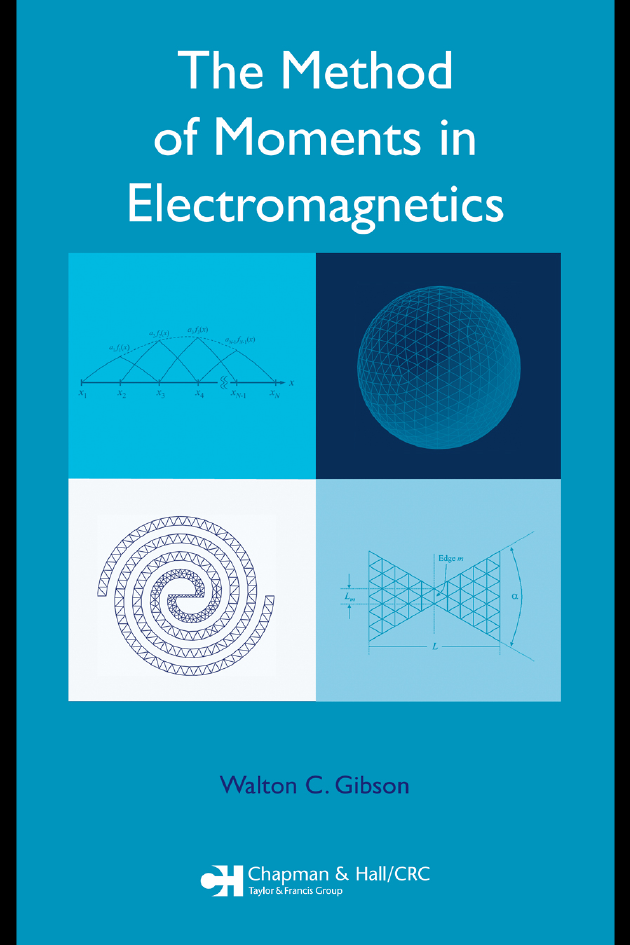
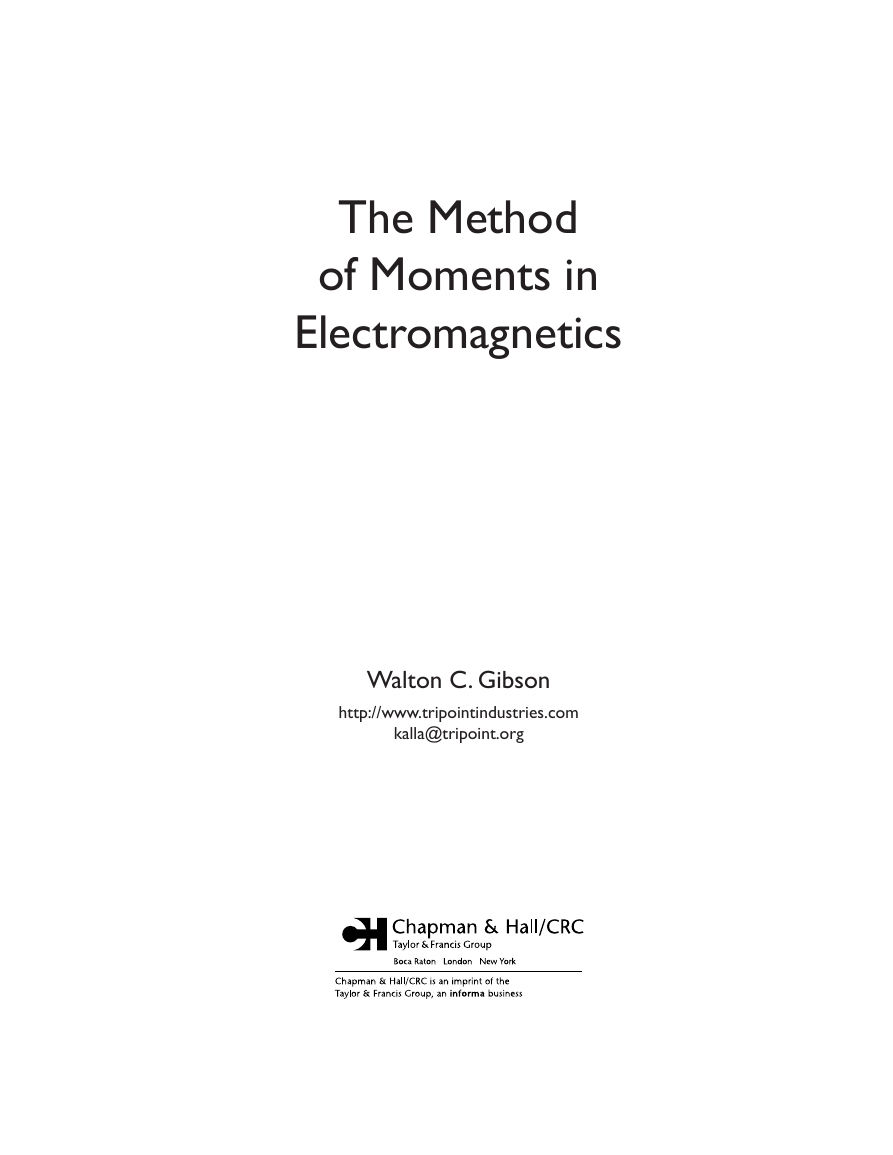
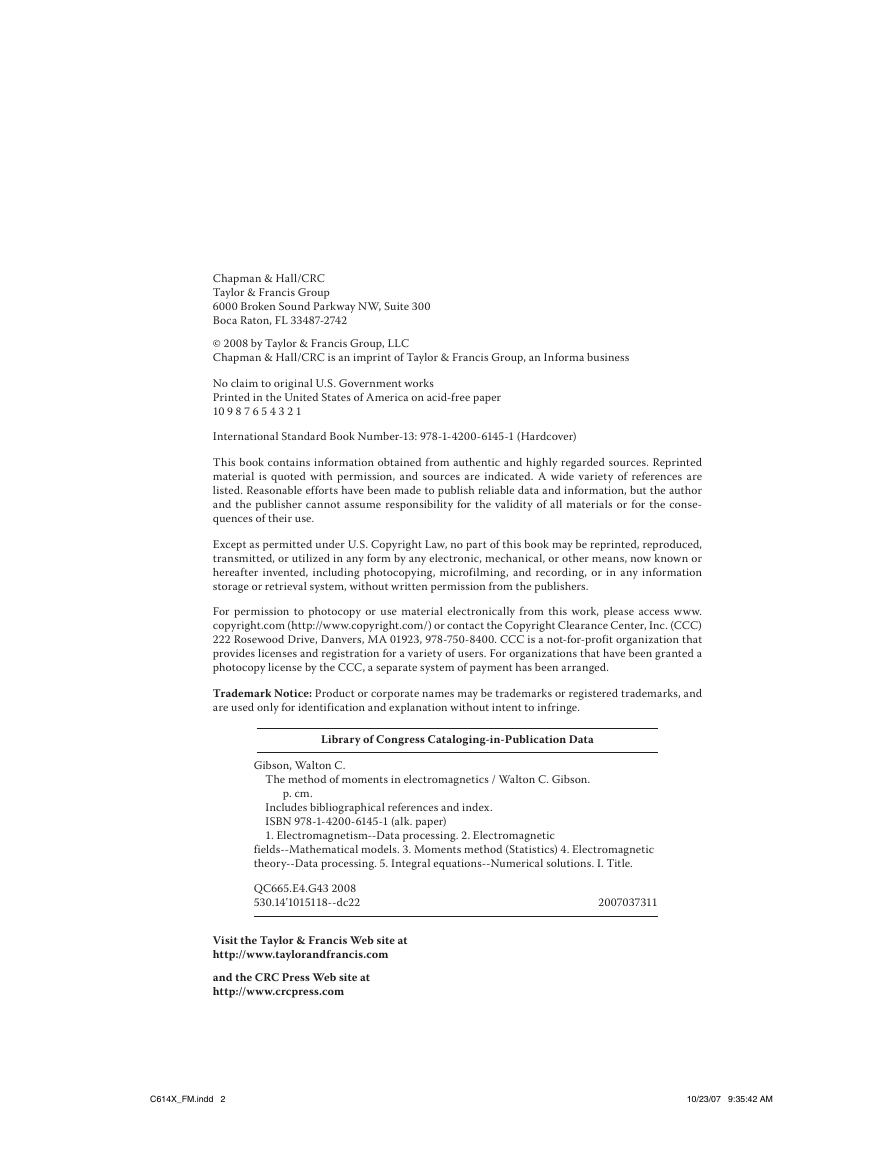
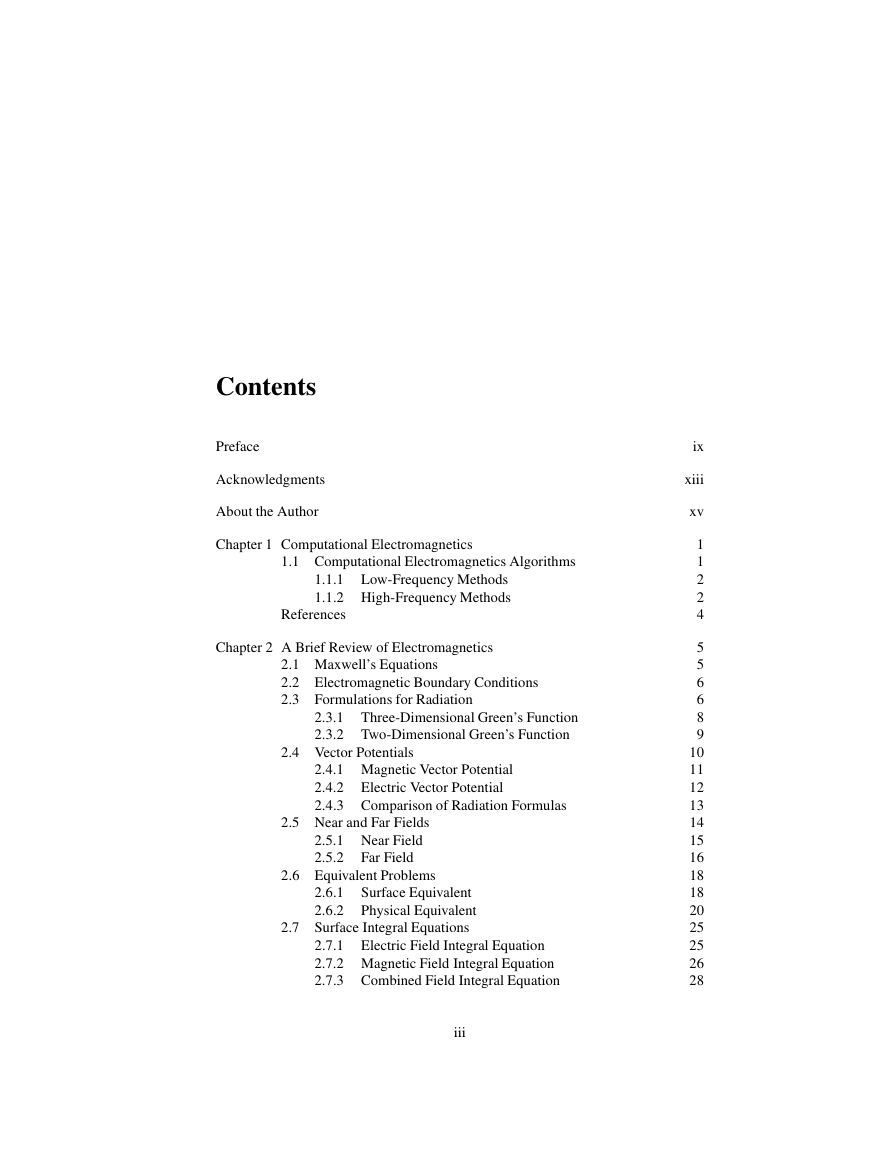
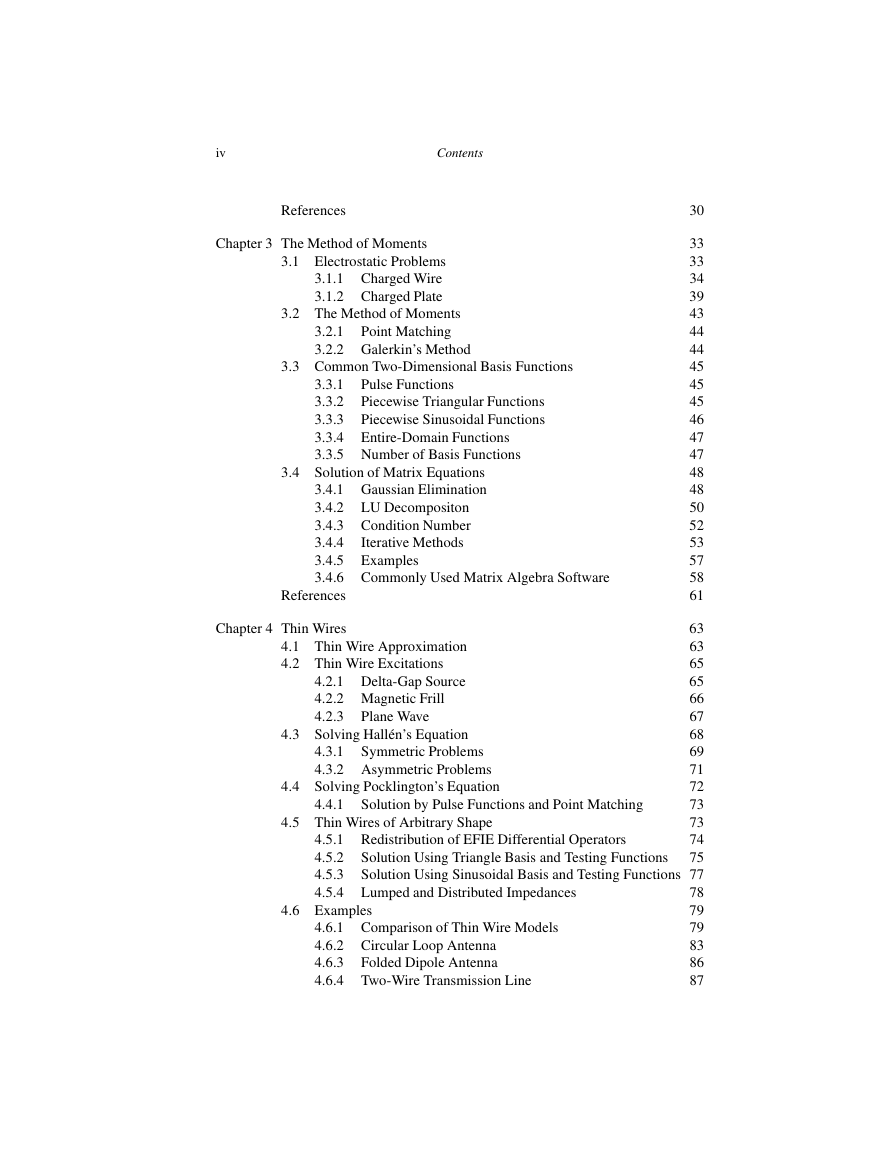
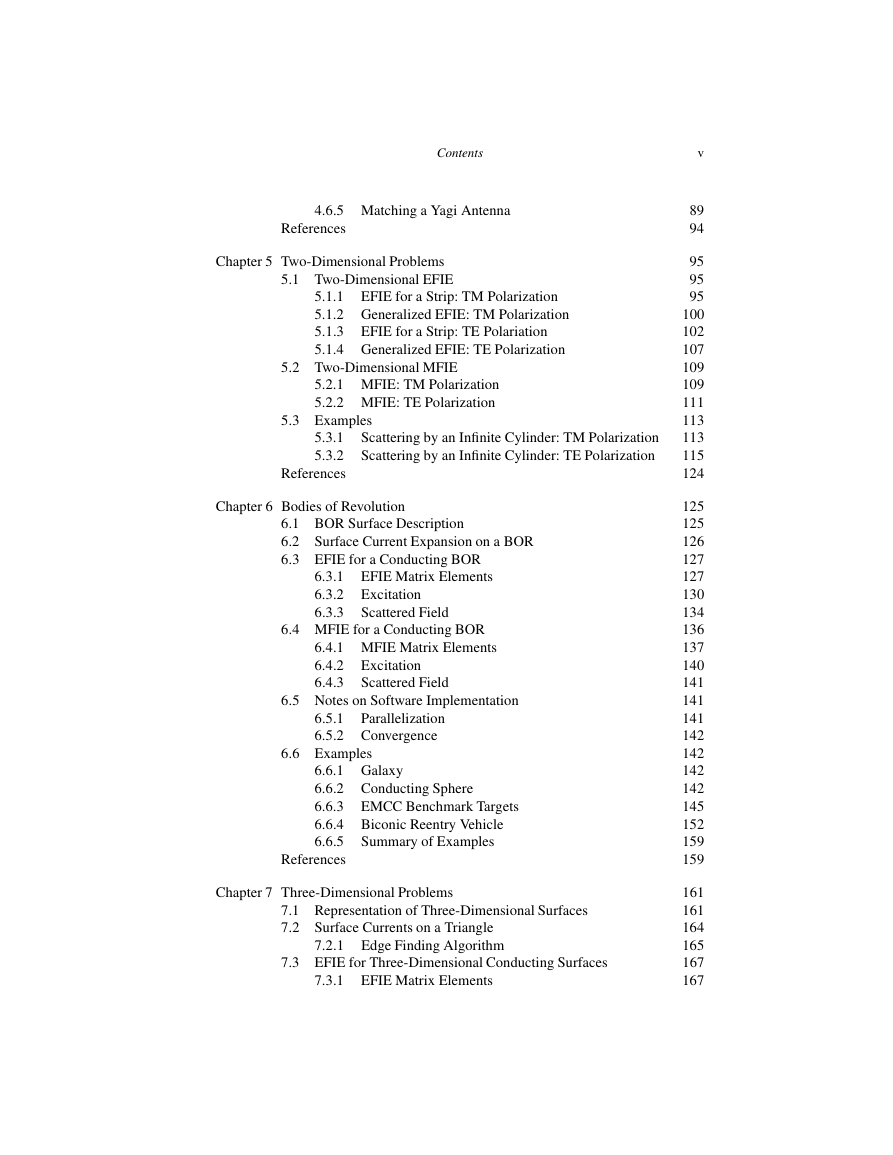
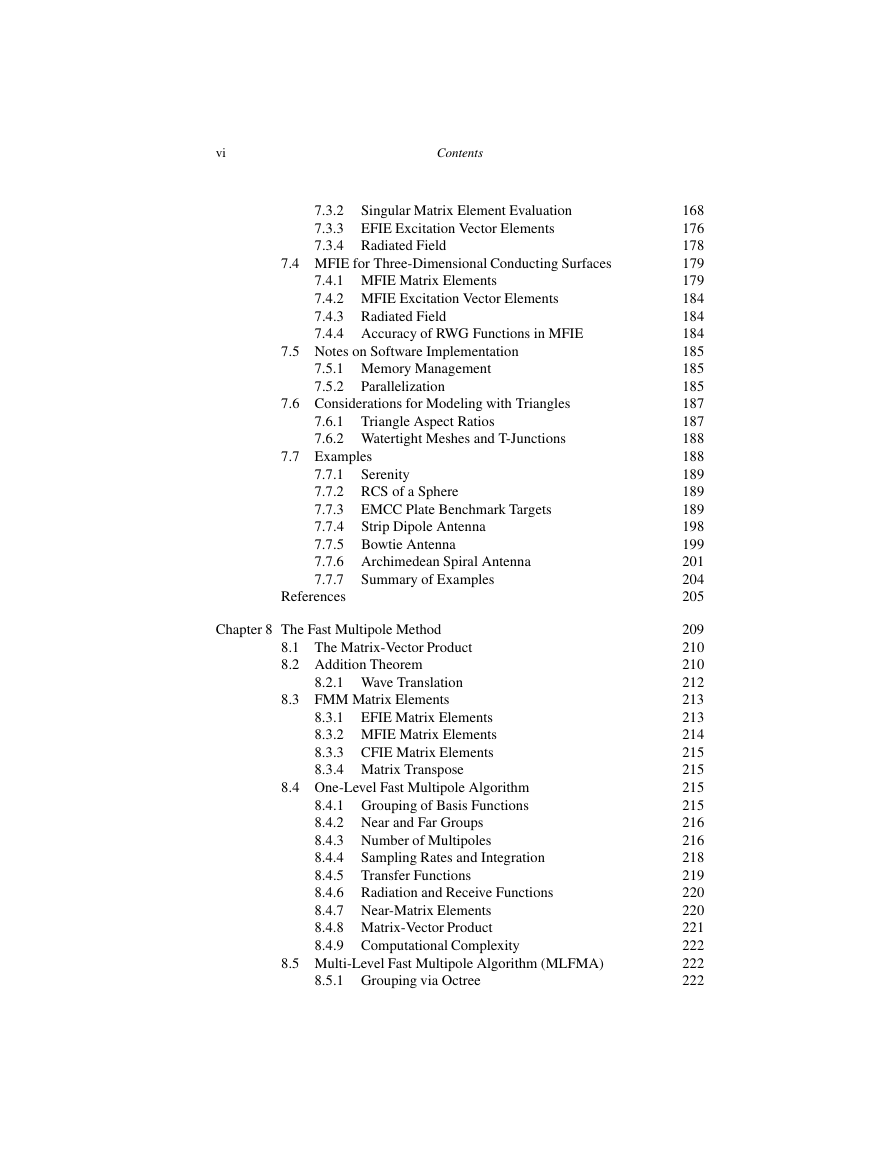
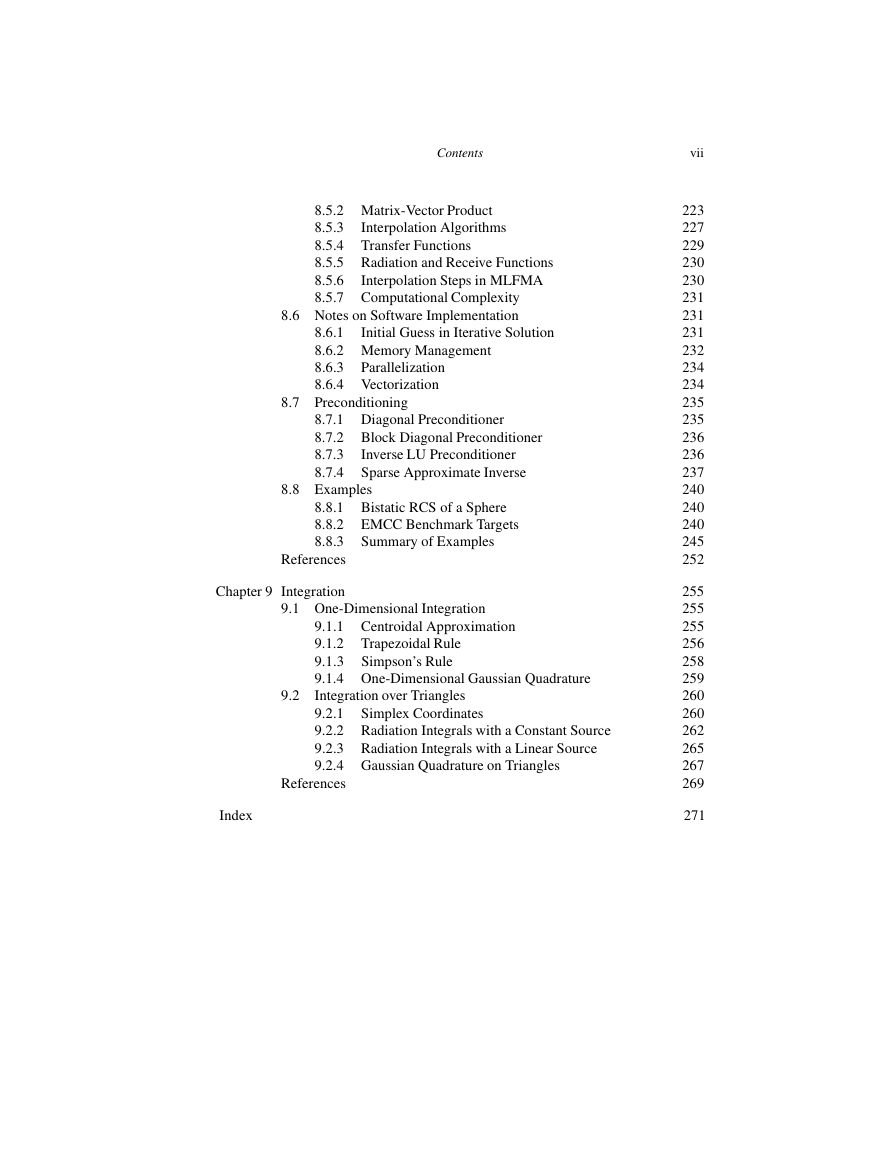








 2023年江西萍乡中考道德与法治真题及答案.doc
2023年江西萍乡中考道德与法治真题及答案.doc 2012年重庆南川中考生物真题及答案.doc
2012年重庆南川中考生物真题及答案.doc 2013年江西师范大学地理学综合及文艺理论基础考研真题.doc
2013年江西师范大学地理学综合及文艺理论基础考研真题.doc 2020年四川甘孜小升初语文真题及答案I卷.doc
2020年四川甘孜小升初语文真题及答案I卷.doc 2020年注册岩土工程师专业基础考试真题及答案.doc
2020年注册岩土工程师专业基础考试真题及答案.doc 2023-2024学年福建省厦门市九年级上学期数学月考试题及答案.doc
2023-2024学年福建省厦门市九年级上学期数学月考试题及答案.doc 2021-2022学年辽宁省沈阳市大东区九年级上学期语文期末试题及答案.doc
2021-2022学年辽宁省沈阳市大东区九年级上学期语文期末试题及答案.doc 2022-2023学年北京东城区初三第一学期物理期末试卷及答案.doc
2022-2023学年北京东城区初三第一学期物理期末试卷及答案.doc 2018上半年江西教师资格初中地理学科知识与教学能力真题及答案.doc
2018上半年江西教师资格初中地理学科知识与教学能力真题及答案.doc 2012年河北国家公务员申论考试真题及答案-省级.doc
2012年河北国家公务员申论考试真题及答案-省级.doc 2020-2021学年江苏省扬州市江都区邵樊片九年级上学期数学第一次质量检测试题及答案.doc
2020-2021学年江苏省扬州市江都区邵樊片九年级上学期数学第一次质量检测试题及答案.doc 2022下半年黑龙江教师资格证中学综合素质真题及答案.doc
2022下半年黑龙江教师资格证中学综合素质真题及答案.doc